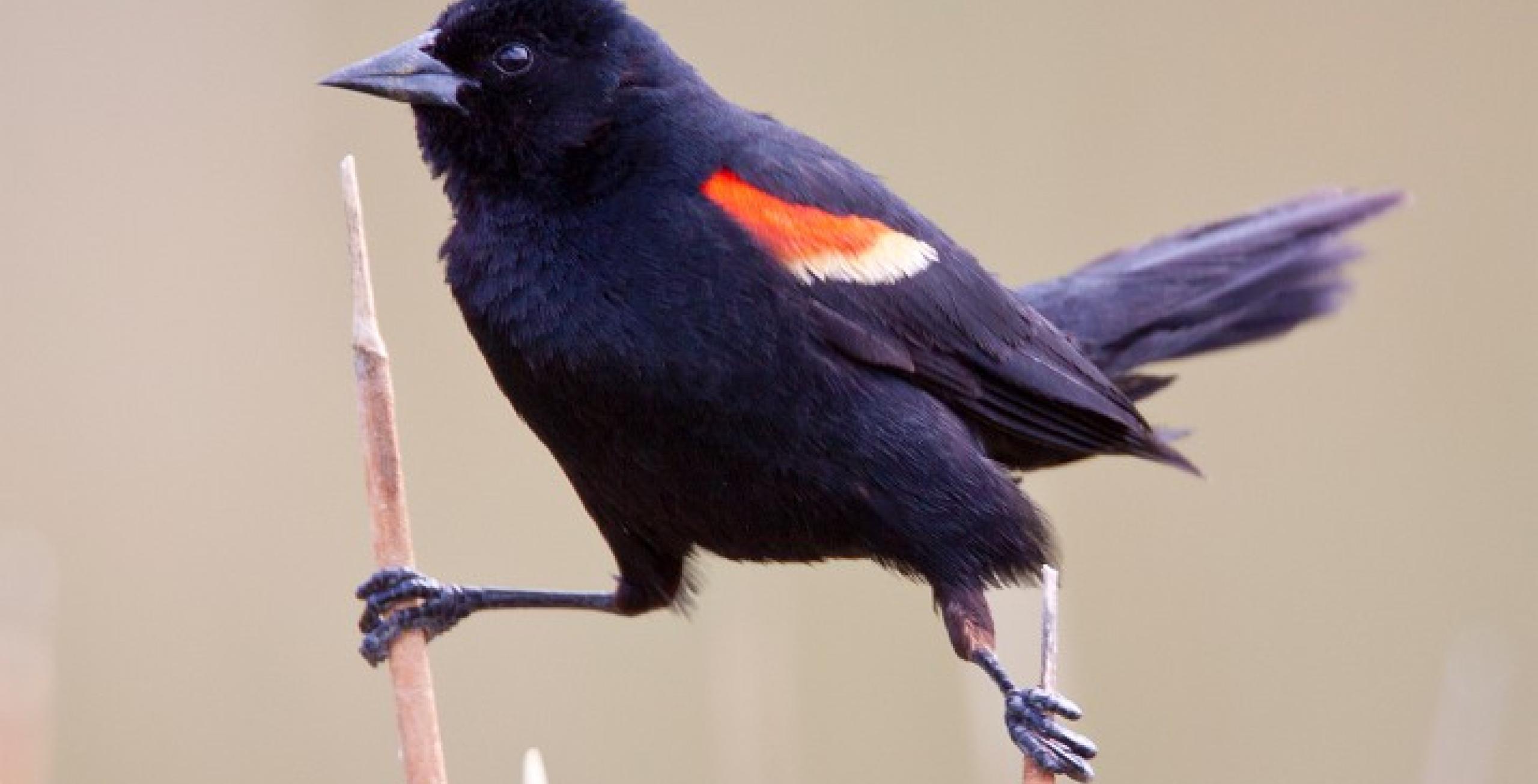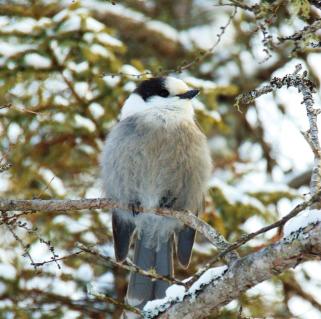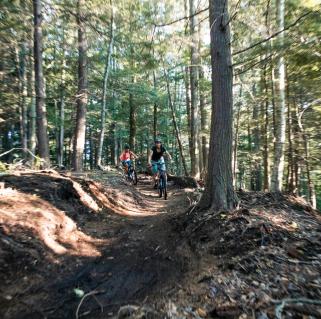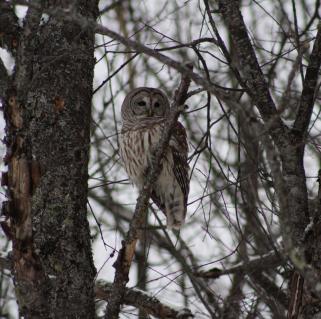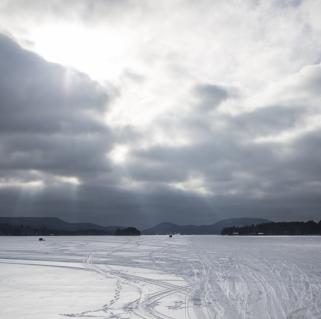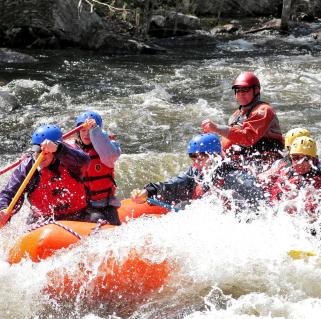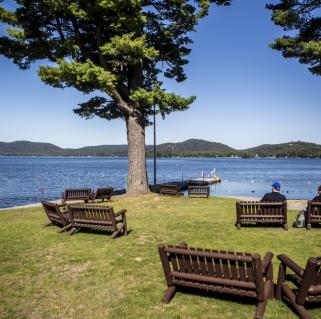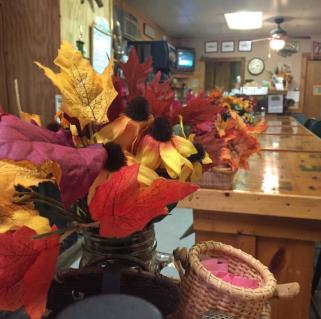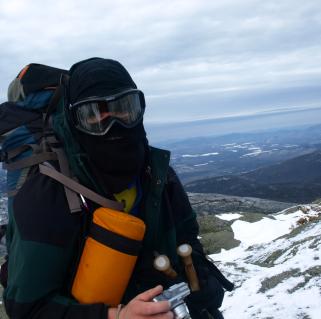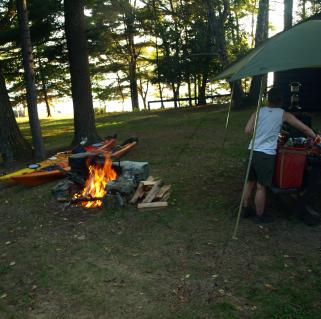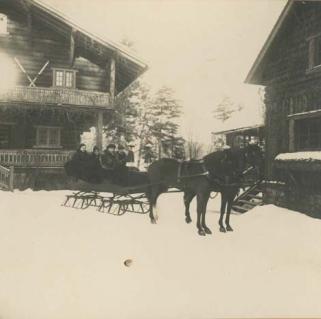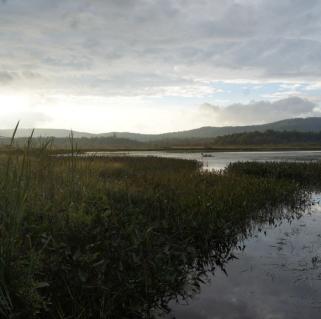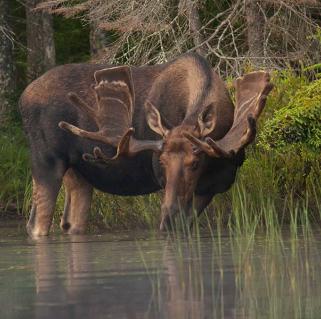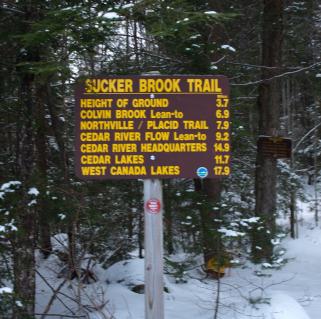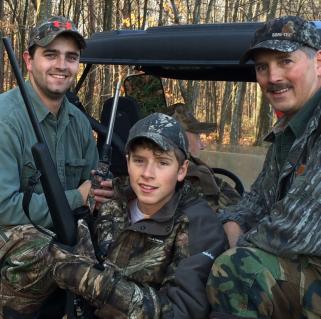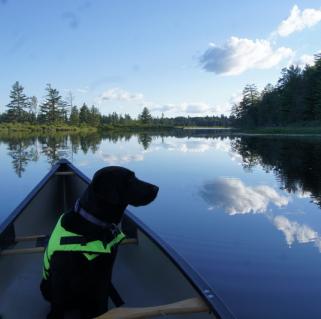Mud Season
In 1922, T.S. Eliot famously began his poem, The Waste Land, by stating, "April is the cruelest month." It may seem that way to some in the Adirondacks since it is also the start of "mud season." The world around us begins to thaw out. Snowmobile and ski season has ended. The ground is covered in wet snow and mud making it difficult to hike or camp. For birders, on the other hand, it is one of the most exciting months of the year!
Ecstatic Birders!
In April, hibernating mammals awaken and hordes of breeding bird species return from their winter ranges. More than half of our breeding bird species return in April, with the remaining species returning during May. Posts to the regional and New York State birding list serves soar in numbers with "first-of-the-season" sightings by birders. The excitement is always palpable! Just this morning, birders in Keene Valley posted that a "first-of-the-season" Yellow-bellied Sapsucker was outside their home.
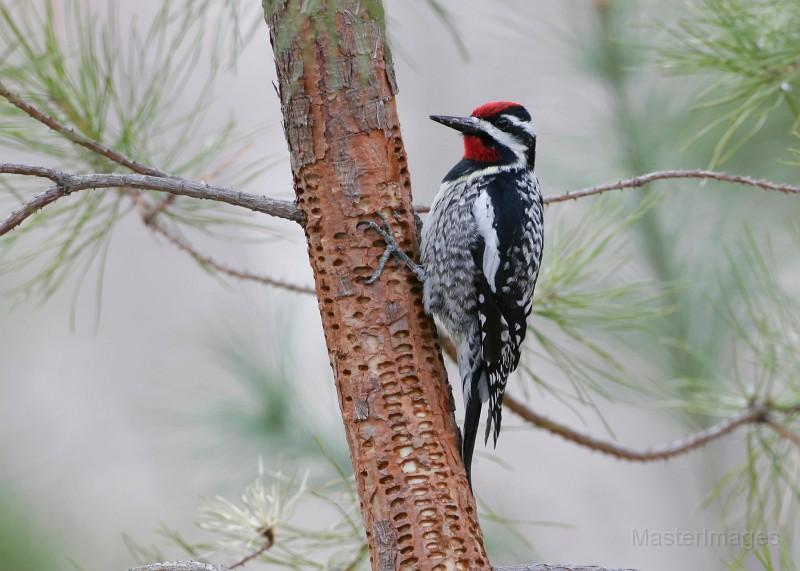
Winter Visitors Still Here
April is also fascinating because, in addition to all the returning birds and our year-round species, the winter irruptive bird visitors from the north are still here! Many of the irruptive species from Canada, such as the Bohemian Waxwing, can still be found during mud season before they head north to their summer breeding grounds.
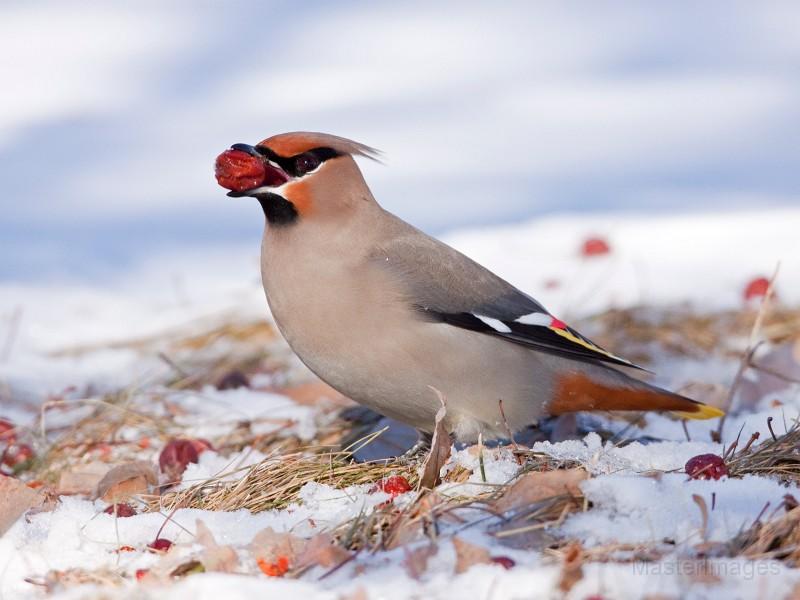
A Dangerous Month
April can be a perilous month for many bird species. Males return ahead of females, competing with other males for the best breeding territories. The males who return first get the best breeding areas, but they risk late storms that can take a toll. One year, an American Woodcock, a ground dwelling bird, ended up on someone's porch in Long Lake after a late April storm that dumped two-feet of snow. Despite the efforts of a wildlife rehabilitator, this starving bird did not survive. It is a tricky balance for when a male bird should chance a return to the Adirondacks. Many may recall the wild snowstorm on Memorial Day Weekend in 2013 when two feet of snow fell in the mountains – with all the breeding birds already back, and on their territories.
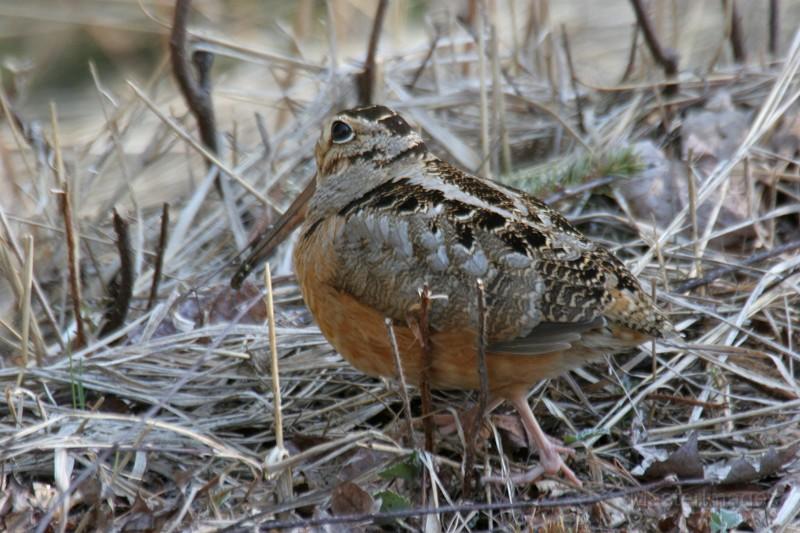
Migration
Most birds migrate at night. In the spring, birds move on southerly winds after fronts move through. There are mornings when we awaken to find that 10 to 15 different species literally arrived overnight! Every day in April holds excitement as the birds move back into our area.
As the ice begins to melt on the lakes, waterfowl will congregate on these small open areas, making it easy to observe them. In early April, on the first day that the outlet of Little Tupper Lake had a small area of open water, I found 4 species of waterfowl: American Black Duck, Ring-necked Duck, Common Goldeneye, and Hooded Merganser.
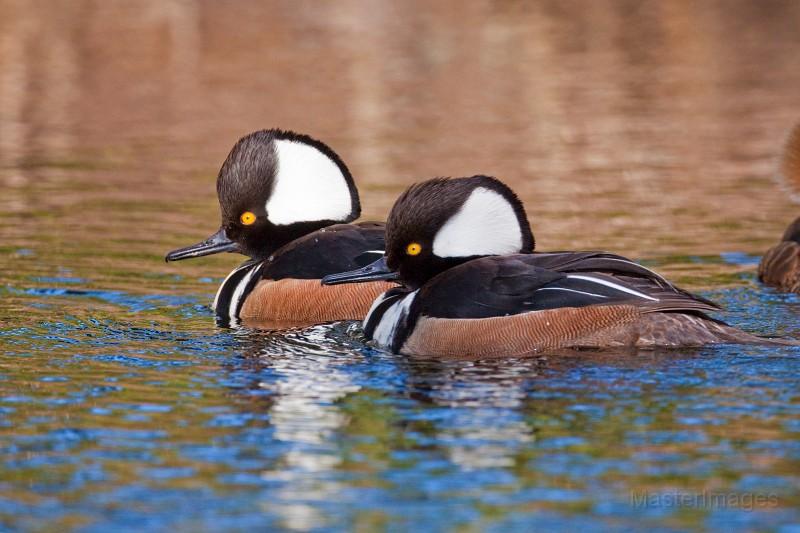
I find it remarkable that waterfowl species know exactly when to return! As soon as open water appears on Long Lake, a Common Loon will immediately show up!
Winter Nesting
Great Horned Owls, a year-round species, nests in winter, and they are feeding young during mud season.
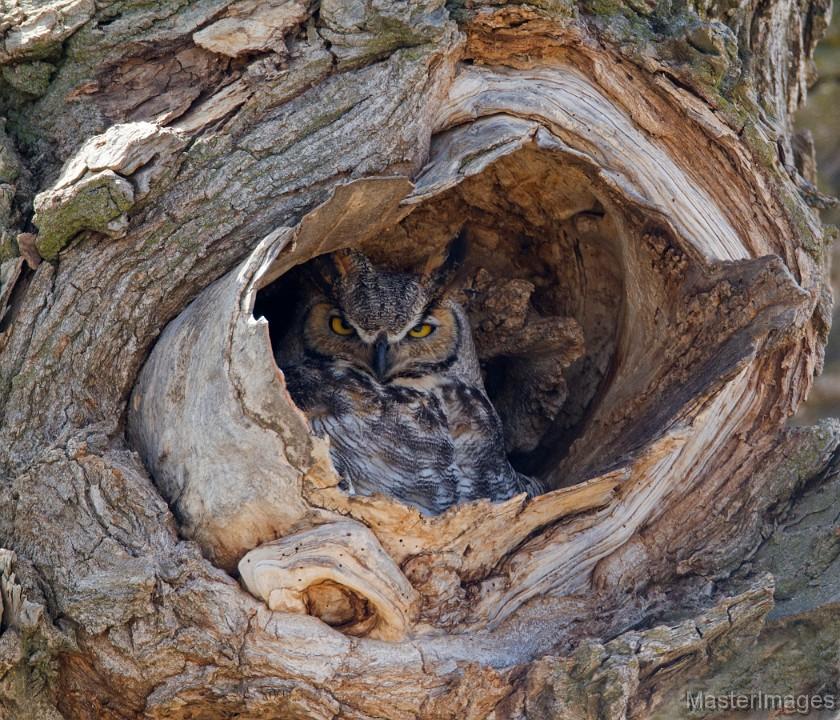
Gray Jay young fledge the 3rd week of April. Gray Jays nest in late winter which enables them to spend the precious summer months caching food so they can make it through the winter. Red Crossbills can nest at any time of year, but they most often nest during winter in the Adirondacks. They did nest this past winter, so Red Crossbill fledglings will show up this spring during April.
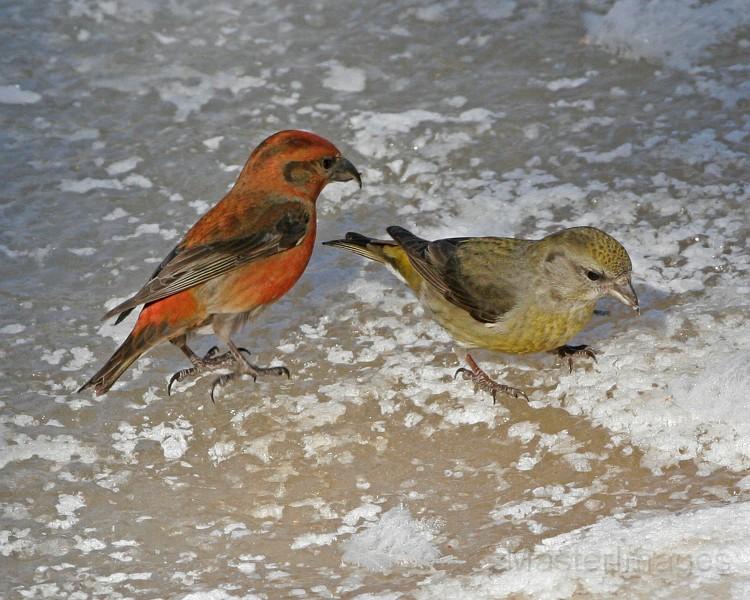

April Nesters
Many bird species begin nesting in April in the Adirondacks. Bald Eagles, American Crows, and Common Ravens build nests and breed in April.
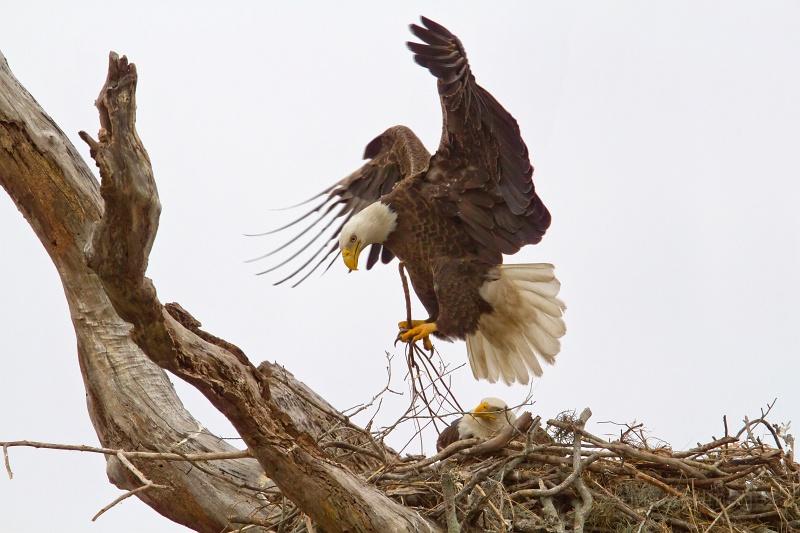
Early Migrants
Some of the earliest migrant species to arrive include: Turkey Vulture, Broad-winged Hawk, American Woodcock, Yellow-bellied Sapsucker, Eastern Phoebe, Tree Swallow, Winter Wren, Hermit Thrush, American Robin, Palm Warbler, Song Sparrow, Dark-eyed Junco, Red-winged Blackbird, Common Grackle, and Rusty Blackbird. I particularly look forward to the return of the small, fiesty Winter Wren, which loudly belts out its long, beautiful song!
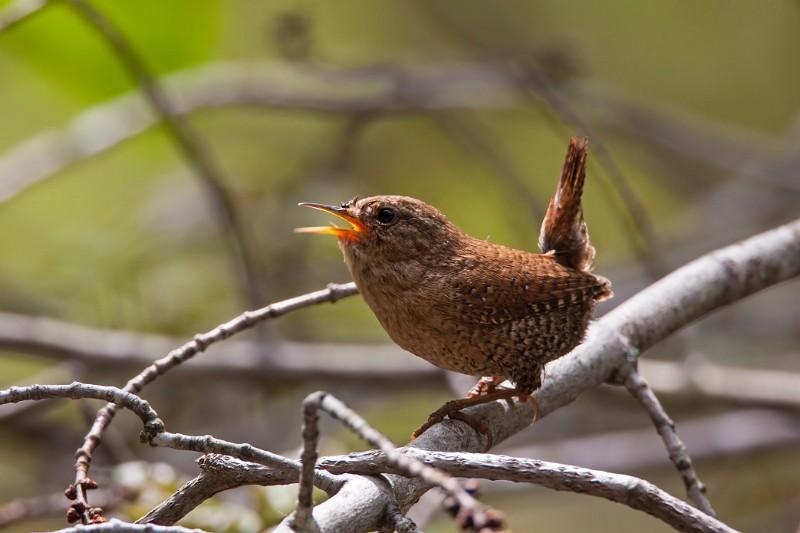
My favorite returning migrant species is the Hermit Thrush. The flute-like song of the Hermit Thrush is considered the most beautiful bird song in North America, and we are so fortunate that this is a common breeding species in the Adirondacks. Like many other thrush species, they favor dawn and dusk singing. A couple decades ago, I was sitting on the summit of the mountain we live on with my two young sons, then 5 and 2 years old. I wondered aloud about the name of the beautiful bird we heard singing every evening after dinner. My 5-year old answered that it was "the Hermit Thrush, which sings the sun to set in the western sky!" He learned that song and quote in his Kindermusic class and never forgot them!
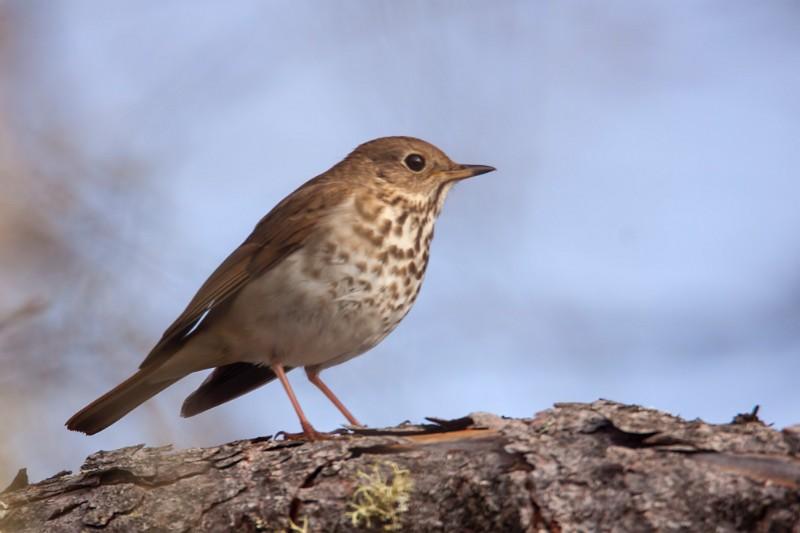
While many woodland species arrive on a schedule like clockwork each year, the return dates of some species are dependent on open water. Return dates for waterfowl and other species such as Osprey and Great Blue Herons, varies from year to year. This year, following a very cold winter with thick ice on the lakes, they'll be returning later than usual.
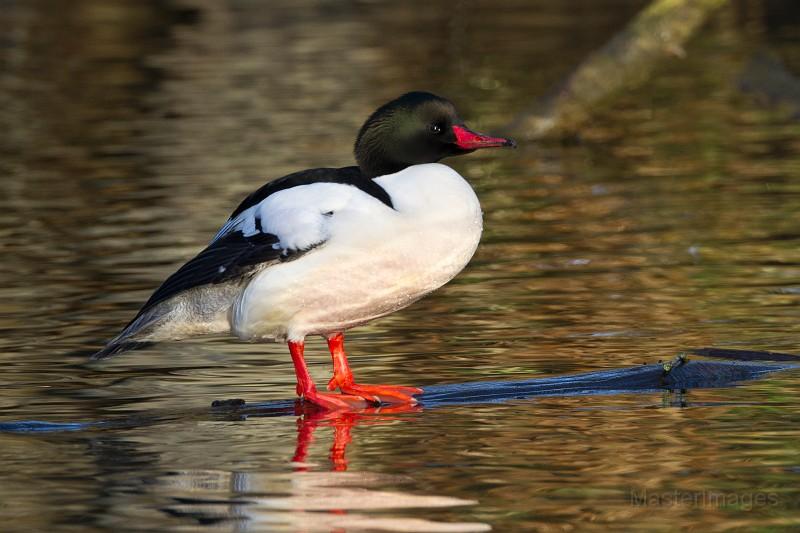
Year-Round Species
During mud season, there are many behavioral changes among the year-round species also. Woodpecker species begin to display courtship behavior. Ruffed Grouse begin to march around roadways in display mode, which is always comical to witness!
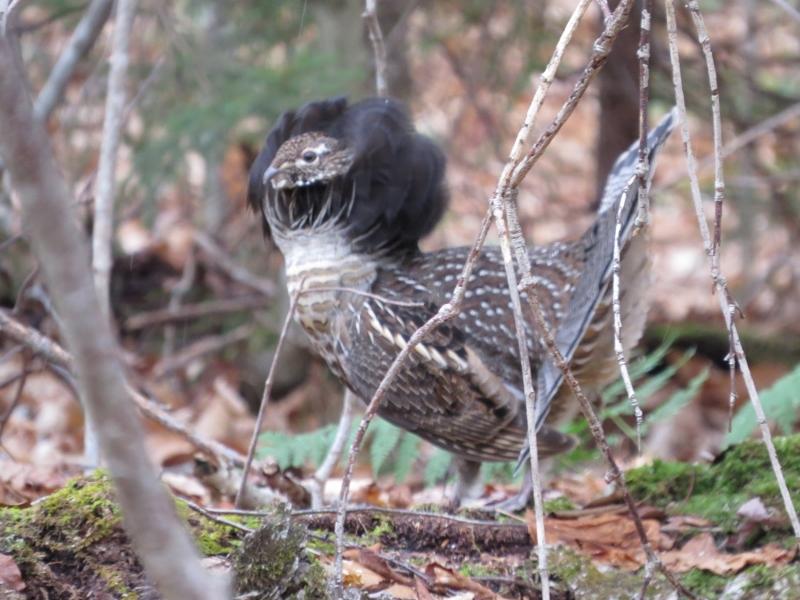
In April, Wild Turkeys also begin to vocalize, court and display. Brown Creepers and Golden-crowned Kinglets begin to sing. Barred Owls hoot more.
Warbler Arrivals
Birders particularly look forward to the return of the colorful warbler species with their beautiful songs - the "butterflies" of the bird world! The first species to return is the Palm Warbler which breeds in boggy habitat.
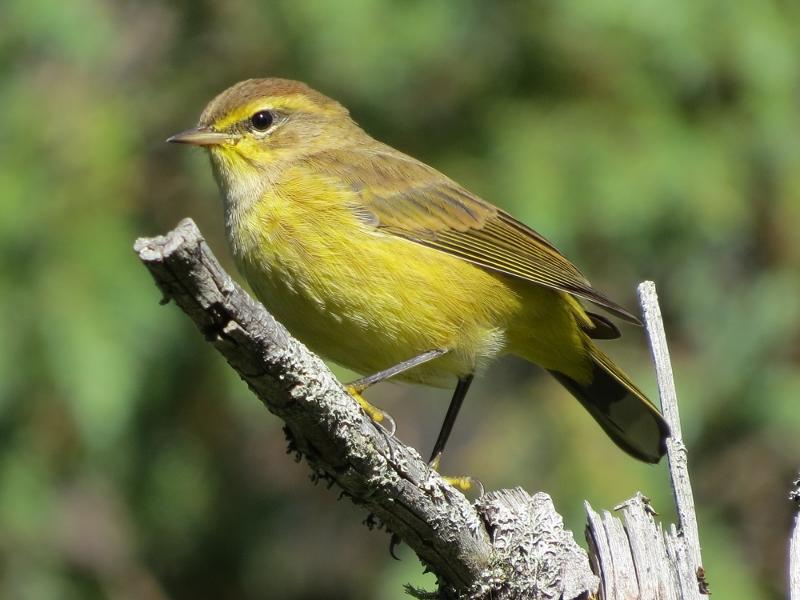
Northern New York is the best location in North America to find breeding warblers with nearly 30 species that nest in this area.
The most sought after warbler species among visiting birders is the beautiful Mourning Warbler, which favors thickets in areas growing back up after logging.
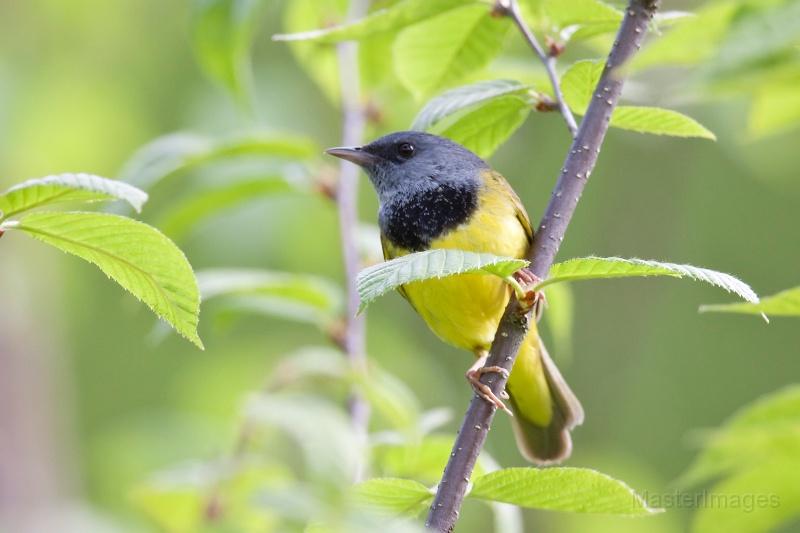
Sparrow Arrivals
The handsome Lincoln's Sparrow returns to the bogs during mud season.
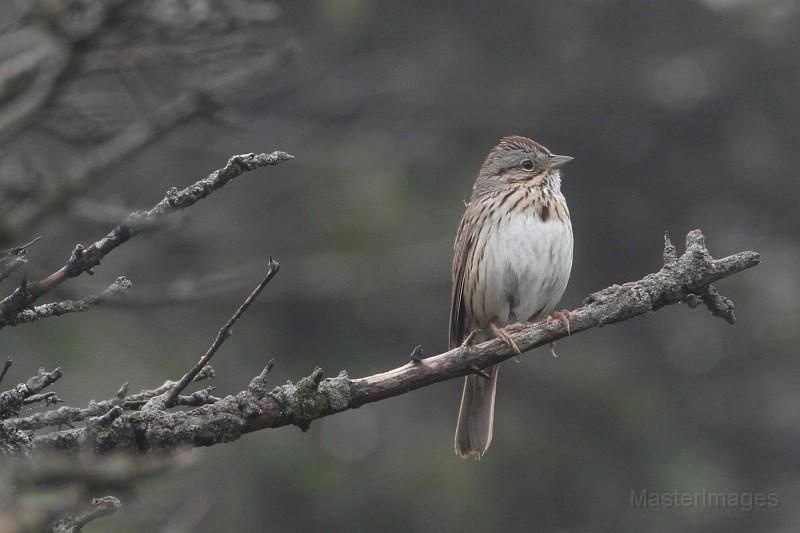
The "mascot of the north" - the White-throated Sparrow, a widespread breeder in the Adirondacks, also returns in April.
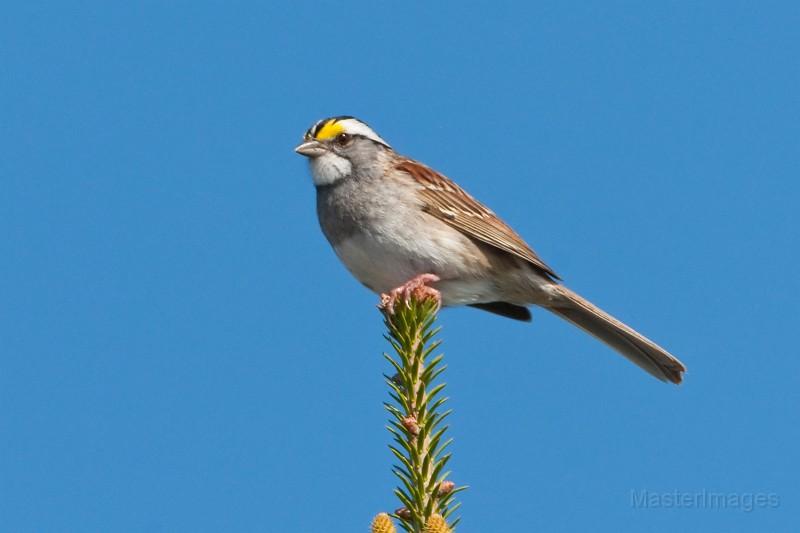
April Amphibians
Amphibian species also come alive in mud season with the beautiful Spring Peeper chorus heard on warm evenings. Wood Frogs can be heard quacking in vernal pools!
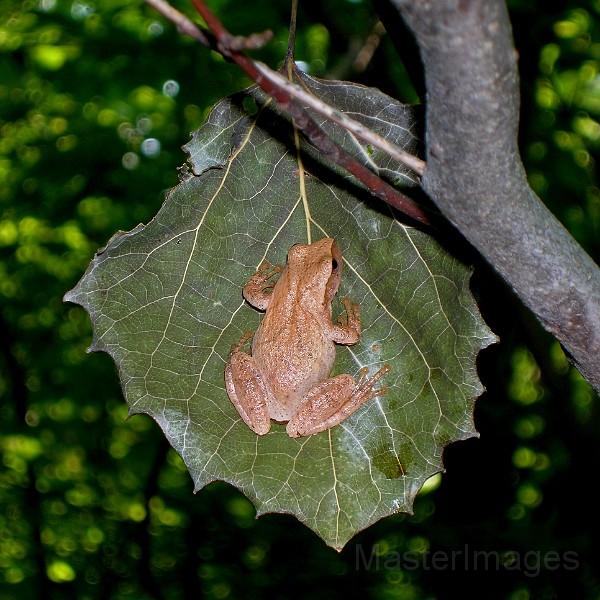
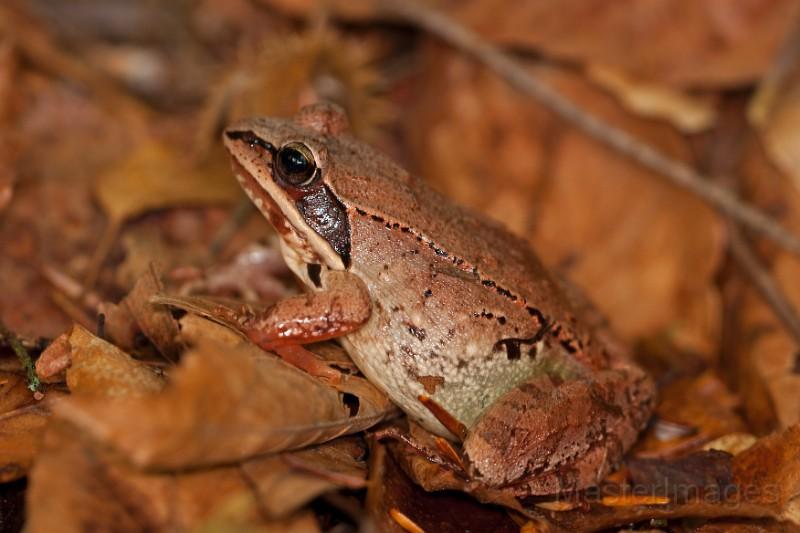
Late April Camping
Late April is my family's favorite time to camp in a lean-to along the shores of Long Lake. Once the ice is out, we put our boat in. Summer residents and tourists are not yet here, so the north end of 14-mile Long Lake is extremely quiet. There are no biting insects and the leaves are not out, so you can see all the returning birds. It is a lovely, peaceful time to camp and hike. The nocturnal sounds are gorgeous – Northern Saw-whet Owls toot (sounds like a truck backing up!), Barred Owls hoot, Common Loons give their haunting calls, Ruffed Grouse drum (sounds like an engine starting), Wilson's Snipes make their ghostly sounds, and American Woodcocks "peent."
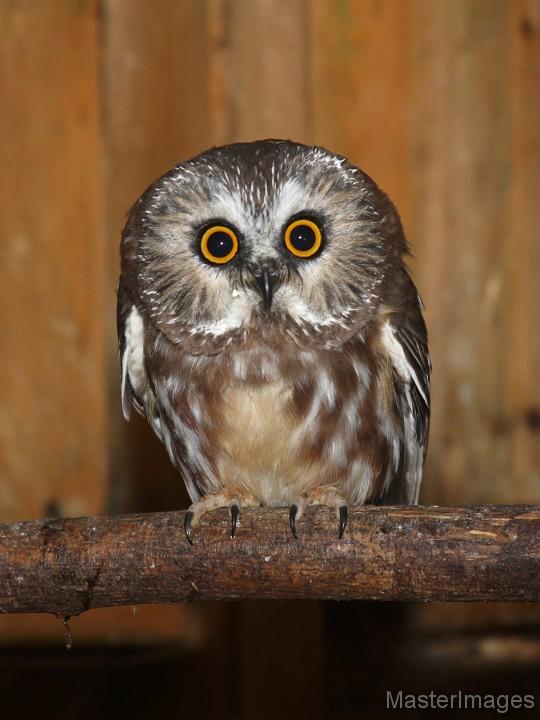
April is certainly not the cruelest month! On the contrary, for wildlife enthusiasts, it is one of the most exciting months of the year!
Adirondack Birding Festival
If you would like to visit the Adirondacks during the height of the breeding bird season, Hamilton County is sponsoring the 11th Annual Adirondack Birding Festival on June 12, 13, and 14. There are three days of field trips, a social dinner cruise Friday night on the W.W. Durant on Raquette Lake, and a keynote presentation at the Adirondack Experience, The Museum on Blue Mountain Lake on Saturday afternoon. I hope you can make it!
If you do plan to visit, there are many wonderful lodging and restaurant options in Hamilton County.
In related ADK Park news:

